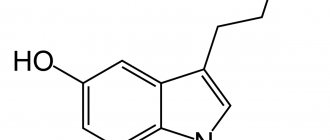Behçet's disease - symptoms and treatment
The main symptom of Behçet's disease is painful mouth ulcers . Most often, ulcers appear on the mucous membrane of the lips, gums, cheeks and tongue. As a rule, they are small (less than 1 cm in diameter), have a multiple nature (from 3 to 10 at a time), are prone to recurrence and heal within 1-3 weeks. This symptom occurs in almost 100% of patients.
painful sores in the genital area is also typical . In women, the labia are more often affected, in men - the scrotum. After healing, small scars may remain. Approximately 5% of men develop epididymitis (non-infectious inflammation of the epididymis), which can lead to infertility.
Skin lesions can be varied and include nodules, acne-like rashes (resembling acne vulgaris), pyoderma (pustular rashes), etc.
Increased skin sensitivity (pathergy) is typical The diagnostic test for pathergy is based on this feature: superficial damage to the skin with the tip of a needle leads to the formation of a focus of redness and inflammation.
Eye damage is most common in young men. It manifests itself as an accumulation of inflammatory cells in the anterior chamber of the eye (hypopyon), or occurs in the form of chronic recurrent panuveitis (inflammation of all parts of the choroid and damage to the vitreous body). It is also possible to damage the anterior parts of the eye (anterior uveitis or iridocyclitis), the posterior parts (posterior uveitis or chorioretinitis). Pseudotumor of the orbit is rare.
In approximately half of the patients, joint damage in the form of non-deforming arthropathy with predominant involvement of the knee, ankle, wrist and elbow joints. Inflammatory fluid may accumulate in the joints (exudative synovitis develops). As a result, the patient experiences pain and stiffness in the joint.
Sometimes heart damage in the form of myocarditis, pericarditis, and inflammation of the coronary arteries. Signs of cardiac involvement may include chest pain, shortness of breath during exercise (less often at rest), and interruptions in cardiac function.
One of the main manifestations of Behçet's disease is damage to the veins . About a quarter of patients develop thrombophlebitis. But the movement of blood clots from the affected vessels and their entry, for example, into the lungs (which can lead to the death of the patient) practically does not occur with this disease. This is due to the fact that the thrombus is attached throughout the entire venous wall and does not have a movable “tail”. Thrombosis of the cava, hepatic and portal veins is life-threatening.
Damage to the arteries is accompanied by thinning and bulging of the wall - the formation of aneurysms. Rupture of aneurysms can be fatal to the patient.
Severe damage to the central nervous system It is possible to develop non-infectious meningitis (symptoms: headache, stiff neck), encephalitis (its manifestations are fever, impaired consciousness, convulsions), damage to the medulla oblongata. In women, benign angiopathy (vascular damage) of the central nervous system is possible, manifested by severe headaches.
Mental manifestations include anxiety and depressive disorders, memory and attention disorders.
The main manifestations of damage to the gastrointestinal tract : ulceration of the mucous membrane of the ileum and cecum. Patients may experience abdominal pain, accumulation of gases, and both constipation and diarrhea may occur. Among residents of the Far East, the incidence of gastrointestinal tract damage is higher than in Mediterranean countries. This may be due to a higher frequency of detection of the HLA-B51 antigen in them.
Kidney damage in the form of glomerulonephritis (autoimmune inflammation of the glomerular apparatus of the kidneys) is rare. But when amyloidosis occurs (the formation and deposition of a specific amyloid protein complex as a result of autoimmune inflammation) with high proteinuria (the release of large amounts of protein in the urine), severe renal failure quickly develops.
Lung involvement is very rare, manifests as hemoptysis due to rupture of vascular aneurysms, and can be fatal [1][2][3][4][5][6][7].
2. Reasons
The immediate causes and patterns of development of Behcet's syndrome are one of the most pressing issues. Since the first clinical descriptions and studies (30-40s of the twentieth century), many assumptions and hypotheses have been put forward, the most well-reasoned of which were hereditary, infectious, and autoimmune. However, for example, the viral or bacterial (streptococcal) hypothesis about the nature of this disease is today considered refuted and untenable, although some authors continue to insist on it. Much uncertainty remains regarding the mechanisms of inheritance, triggering factors of immune and biochemical disorders, etc.
Reliable provoking factors include long-term (many years and daily) alcohol consumption, the presence of chronic infectious and inflammatory foci, etc.
The genetic factor is clearly visible in some cases and absent in others.
Visit our Rheumatology page
Forecast
Most people suffering from Behçet's syndrome lead normal lives and can control the symptoms of the disease with proper medications and a balanced exercise regimen.
Behcet's syndrome is usually a chronic condition. With effective treatment, symptoms become less frequent after 1-2 years, and some patients experience a fairly long period of remission. However, some patients do not respond to treatment and may develop severe damage to the eyes or other organs over several months or years.
The information presented in this article is intended for informational purposes only and cannot replace professional advice and qualified medical care. If you have the slightest suspicion that you have this disease, be sure to consult your doctor!
Therapy
It is impossible to completely get rid of this pathology. Behcet's disease is characterized by a chronic course, but complex therapy makes it possible to transfer the defect into remission and constantly monitor the occurrence of exacerbations. In this way, the patient's quality of life can be significantly improved.
Treatment of Behçet's disease involves the use of immunosuppressive and cytostatic medications. These drugs can be combined with glucocorticosteroids and Infliximab.
If severe arthritis is detected, it is advisable to use non-steroidal anti-inflammatory drugs, methotrexate and colchicine.
To eliminate severe damage to the digestive system, glucocorticosteroids, azathioprine, sulfasalazine, and TNF-alpha inhibitors are prescribed.
If there are appropriate indications, the patient may be additionally prescribed antibiotics and antiviral drugs.
Features of detection
A positive pathergy test is considered a highly specific symptom of the disease. It is positive if, 1-2 days after the subcutaneous injection, the patient develops a pustular rash in the injection area.
In addition, when pathology is detected, differential diagnosis with similar ailments is mandatory:
- Crohn's disease, malignant intestinal tumors, ulcerative colitis;
- herpetic stomatitis, genital herpes;
- reactive arthritis and ankylosing spondylitis;
- multiple sclerosis.
When performing diagnostics, the following results are taken into account:
- ultrasound examination of the abdominal organs;
- tests for tumor markers;
- fundus examinations;
- biochemical blood testing;
- immunological blood test;
- irrigoscopy;
- OAM;
- UAC;
- electrocardiograms;
- colonoscopy;
- radiography and ultrasound of joints;
- fibrogastroduodenoscopy.
Histological examination of biopsy specimens of ulcers formed in the patient is mandatory.
Among other things, the victim may be recommended to consult other specialists with a narrow focus: ophthalmologist, cardiologist, neurologist, gastroenterologist, nephrologist and others.
Prevention
There is no specific prevention against Behçet's disease because its causes are not clear. We can only highlight the main points that will help maintain normal immunity:
- promptly treat infectious diseases;
- stop chronic infectious diseases;
- monitor your daily routine;
- regulate physical activity;
- stop taking uncontrolled medications;
- strictly follow the doctor's instructions;
- take measures to boost immunity;
It is recommended to follow a hypoallergenic diet with a high fiber content.
At-risk groups
Taking into account the fact that the pathology occurs most often in the territory between the Mediterranean and Asia, it is also often called the Silk Road defect. In other areas, cases of Behcet's disease are recorded extremely rarely.
You will be interested in: “Blepharogel-2”: instructions for use, reviews
The disease is most common in Turkey, followed by Japan, Saudi Arabia, Iran and Korea. In other countries, the incidence is only one case per 100 thousand people.
Behçet's disease is diagnosed much more often in men than in women. The only exceptions are Japan and Korea - here the pathology mainly affects the female population. The first signs usually appear in patients over 40 years of age.
Possible consequences of the vice
Among other things, Behçet's disease may well be accompanied by damage to the digestive system, which makes differential diagnosis with Crohn's disease and nonspecific colitis more difficult.
You may be interested in:Yellow nails: causes and treatment
Some patients may experience:
- nonspecific arthritis;
- pleurisy;
- gangrene;
- thrombosis;
- amyloidosis;
- pulmonary embolism;
- myositis;
- renal failure;
- myopathies;
- schizoaffective mental disorders.
In women with Behçet's disease, vulvovaginitis regularly occurs, and in men - epididymitis. It is noteworthy that all these pathologies are recurrent in nature.
Etiology of the disease
The specific causes of Behcet's disease have not yet been identified. Today there are two theories of the appearance of pathology: genetic and infectious. Taking into account the fact that the defect is much more common in older people, it is likely that hereditary predisposition in combination with external harmful factors plays an important role.
Genetically, people who have HLA-B51 antigens and abnormal levels of cytokines IL-6, 17, 8, 21 are more susceptible to the disease.
As for the infectious theory of the development of the disease, the main place in it is given to streptococci, herpetic viruses and mycobacterium tuberculosis.
Among other things, the appearance of this defect can be influenced by prolonged abuse of alcohol, drugs, tobacco, and the presence of autoimmune pathologies, which are accompanied by damage to the mucous membranes.









